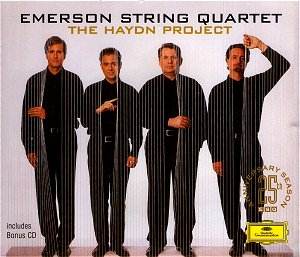 Composer: Edvard Grieg (1843-1907)
Composer: Edvard Grieg (1843-1907)
Works: Complete Music with Orchestra
Performers: Gothenburg Symphony Orchestra/Neeme Järvi, Lilya Zilberstein (pianoforte), Barbara Bonney (soprano), Randi Stene (mezzo-soprano), Håkan Hagegård (baritone), Anne Gjevang (contralto), Kjell Magnus Sandve (tenor), Gothenburg Symphony Chorus, Pro Musica Chamber Choir, Gösta Ohlin’s Vocal Ensemble, Knut Buen (Hardanger Fiddle), Paul Cortese (viola)
Recording: Various dates from 1986 to 1993 at Konserthuset, Göteborg
Label: Deutsche Grammophon
Edvard Grieg, a composer emblematic of Norwegian nationalism and Romanticism, is often regarded as the quintessential musical voice of Norway. His orchestral works, though fewer in number than his chamber and piano compositions, form a significant part of his oeuvre, showcasing his lyrical talent and affinity for folk melodies. The complete orchestral music recorded by the Gothenburg Symphony Orchestra under Neeme Järvi encapsulates this breadth, offering a comprehensive overview of Grieg’s orchestral landscape spanning from the early Piano Concerto in A minor to his lesser-known orchestral songs.
The opening CD features Grieg’s most celebrated work, the Piano Concerto in A minor, performed with notable freshness by pianist Lilya Zilberstein. Järvi’s interpretation is marked by a judicious approach to tempo, maintaining steadiness while allowing for expressive rubato in the solo passages. The orchestra’s entrance post-cadenza is impeccably synchronized, avoiding the excessive liberties often taken by other interpretations. Particularly striking is Järvi’s treatment of the second movement, where the nuanced dynamics breathe life into Grieg’s lush harmonies, reinforcing the adagio’s inherent poignancy. While this performance may not supplant legendary versions by Lipatti or Curzon, it stands as a compelling option for contemporary listeners.
Grieg’s earlier orchestral work, “In Autumn,” reflects a transitional phase in his compositional style. Although its structure may be perceived as somewhat episodic, Järvi’s attentive conducting captures the work’s underlying wistfulness. The thematic material, while at times predictable, is rendered with a sincerity that invites appreciation for its charm. The “Symphonic Dances,” while intended to evoke a symphonic form, falter under the weight of their ambition. Järvi’s efforts to inject momentum into the second dance yield mixed results, revealing Grieg’s struggle with thematic development when relying on folk material.
The second disc shifts focus to Grieg’s “Holberg Suite,” a work that marries baroque forms with Romantic sensibilities. Here, Järvi’s direction is both fluid and robust, yielding a performance that highlights the suite’s graceful melodies and vibrant rhythms. The “Two Nordic Melodies,” particularly the first, emerge as extraordinary examples of Grieg’s orchestral texture, with its inventive orchestration that foreshadows the sound world of Sibelius. The juxtaposition of the oboe’s poignant entry in “Evening in the Mountains” against the lush orchestral backdrop showcases Järvi’s ability to craft moments of profound beauty.
The ambitious recordings of “Peer Gynt” and “Sigurd Jorsalfar” take center stage in CDs three and four. Järvi’s complete approach to “Peer Gynt,” notably the inclusion of melodramatic fragments, deepens the listener’s understanding of Grieg’s dramatic capabilities. The nuanced dynamics and precise articulation in “Morning Mood” and the chilling choral entry in “In the Hall of the Mountain King” demonstrate a thorough exploration of the score, highlighting the tension between the idyllic and the sinister inherent in Grieg’s music. The recording captures a vibrant soundscape, elevating the drama of Ibsen’s narrative through Grieg’s evocative orchestration.
The Symphony in C minor, although withdrawn by Grieg after its completion, reveals the composer’s early aspirations in symphonic writing. While it lacks the distinctiveness of his later works, Järvi’s interpretation offers a glimpse into Grieg’s youthful exuberance, with the first movement presenting a Nordic character that resonates within the context of his development as a composer. The finale, however, struggles under the weight of its own ambitions, offering a somewhat disjointed conclusion. Järvi navigates these challenges with a sensitivity that respects Grieg’s intent, even if the result is ultimately unfulfilling.
The final CD showcases Grieg’s orchestral songs, where the absence of texts regrettably diminishes the impact of the vocal performances. Barbara Bonney’s interpretations shine with an emotional depth that complements Järvi’s orchestral support, particularly in “The First Meeting” and “Spring,” where the lush arrangements enhance the lyrical qualities of the melodies. Yet the listener is left yearning for the poetry that underpins these works, a missed opportunity to fully appreciate Grieg’s intricate relationship with text and music.
This comprehensive collection presents a rich tapestry of Grieg’s orchestral output, expertly curated and performed. Järvi’s interpretations, while occasionally faltering in the face of Grieg’s more ambitious endeavors, reveal a deep commitment to the music, maintaining a balance between respect for the composer’s intentions and the vitality of performance. The engineering and sound quality of the recordings are commendable, allowing the nuances of orchestral color to emerge distinctly. For those seeking a thorough exploration of Grieg’s orchestral works, this set not only satisfies but also illuminates the broader context of his artistic journey, making it an invaluable addition to any serious collection.


